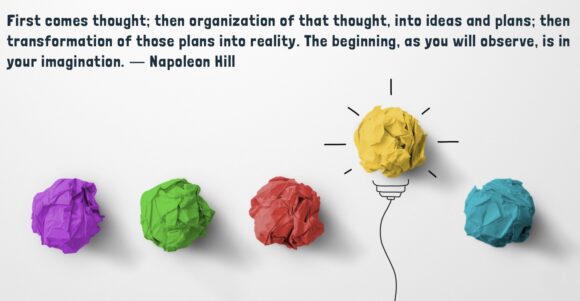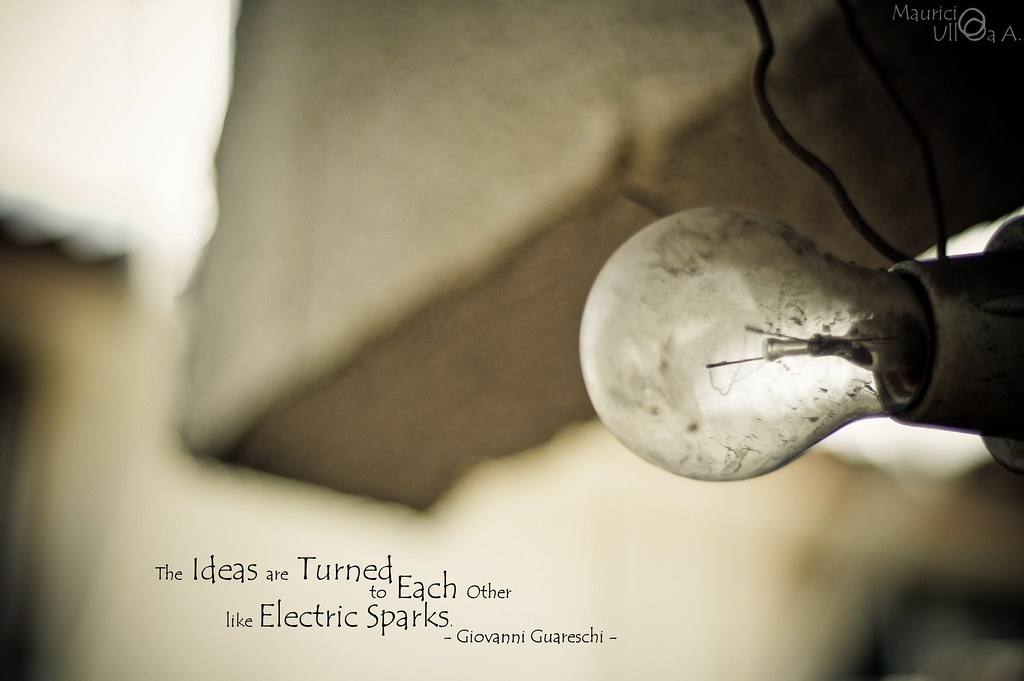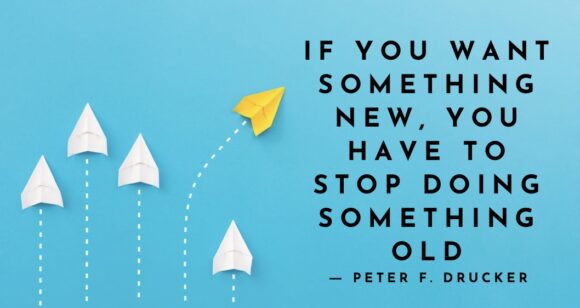“First comes thought; then organization of that thought, into ideas and plans; then transformation of those plans into reality. The beginning, as you will observe, is in your imagination.” ― Napoleon Hill

Do you have a process to generate new, exciting ideas and bring them to life?
There are periods in our life when ideas come naturally but there are periods when it is much more difficult to generate ideas.
You may take your notepad and pen and go deep in the thinking process. But still you may have nothing.
When you are at the initial stages of the creative process, do you believe that there is no such thing as a bad idea?
Can all ideas can be admitted into the mix or do you pre-select ideas based on your thoughts and beliefs about them?
Are there guidelines that you can use to generate and encourage novel ideas?
In order for novel ideas to be discovered, they have to be acknowledged and allowed a chance.
The following 7 steps may help with your idea process…
1. There is no such thing as a bad idea
“Ideas come from everything” ― Alfred Hitchcock
Have you had the experience of a resource that you previously overlooked coming to the rescue in a project? Sometimes what you think is not important becomes the highest value tool.
When you do not allow different elements into the mix, you may just be limiting your choices to only a few.
You may need to retrain your thinking to look at ideas in a different light. There may be great value in allowing many ideas to incubate in your mind. At the very least, it gives you new choices to consider instead of doing the same thing.
Begin by believing that you can have great ideas and there is no such thing as a bad idea. Be open to the idea that all seemingly bad ideas are ones that may not be quite as relevant to the questions that you are asking in the current moment.
2. Understand that we are constantly selecting based on our beliefs and experiences
We think ideas are good or bad, worthy or unworthy, interesting or boring. By pre-labeling an idea as good or bad and so on, we make sure that it is not brought on the table.
When you pre-label an idea, you assume that it may have no value to you.
We are constantly selecting for or against new ideas based on the filters that we view the world through. For example, if your filter is one of the devil’s advocate, you may not be interested in the merits of an idea. Instead you may argue endlessly just to prove your point that it is not a great idea.
In the book, The 10 faces of innovation, Thomas Kelley describes the idea generation process in the innovation firm IDEO. In IDEO, the culture actively encourages and promotes new ideas.
The simple but effective method IDEO uses is personas. Personas are different social masks that people can adopt while looking at an idea. There are several personas such as the anthropologist, the architect, the storyteller and the experimenter that can counter the devil’s advocate persona.
These personas are used to allow ideas to come to light and have a chance and not be nipped in the bud by the devil’s advocate. For example, the storyteller persona can build a compelling narrative based on actual customer needs and how a product can provide great value.
When other personas give the idea a chance, it is much more likely that it will see the light of day. Are you the playing devil’s advocate role when you generate new ideas? Having a supportive environment may be key for ideas to thrive.
3. The ideas cafe
“If you have an apple and I have an apple and we exchange these apples then you and I will still each have one apple. But if you have an idea and I have an idea and we exchange these ideas, then each of us will have two ideas.”― George Bernard Shaw
Ideas come and collide with one another and can generate new ideas. In his TED talk, Steven Johnson describes that historically coffee shops were great idea generation machines and lead to the period known as The Enlightenment.
According to Johnson, in coffee houses, people got together from different backgrounds and there was the mix-up and sharing of various ideas.
Ideas do not exist in a vacuum. They need to come together in different forms and ways. Instead of having a singular eureka moment, great ideas are more like a network or a mesh that comes together.
The area around Stanford University is a hotbed of innovation and ideas because of the close proximity of people who know and believe that they are innovators. Ideas are coming together, combining and colliding to produce something novel.
And after you have absorbed and allowed ideas to collide with each other, you may have to allow them to incubate in your mind for some great form to be created.
When we implement ideas for a new paradigm, we are not just drawing from the idea but from who we are and our experiences. More importantly, we are also drawing from the various ideas that we have received over the years from different people and sources.
If you feel like you require new ideas, go out. Go to the local coffee stores and the local art districts. Go on a nature hike with people from a hiking club. The idea is to mingle with people and perspectives that are different from yours.
4. Practical rationalizations and authority figures
So many of us give up on what seems like a great idea because some authority figure or the still silent voice in our heads dictates us to do so. We take input on our ideas much too soon and convince ourself that the idea will not work.
In organizations, brainstorming may not be a great idea if the culture does not allow for ideas to be discussed freely. In the innovation giant IDEO, the culture promotes ideas to come forth and everyone is encouraged to contribute.
At IDEO, creative brainstorming involves beginning with a well-defined and honed statement of the problem. Ideas are encouraged with the upper management stepping back and allowing others to participate. The culture does not suppress good ideas. When the upper management steps back, there is room for admission of new ideas.
I have worked in places in the past where all that the higher management wanted were people who could follow orders. While the general belief was that the company allowed new ideas, the culture did not support that belief.
In addition to authority figures, you may have many outdated and counter-productive beliefs around ideas:
Ideas are a dime a dozen…
Ideas are cheap…
All of these beliefs and assumptions prevent you from even coming up and sometimes disallowing ideas to take flight. Once the rationalization process kicks into high gear, we find evidence for why a particular idea is a poor one.
I don’t have the time…
I don’t have the money…
I am very busy…
There is too much competition…
I am not skilled enough…
There is a willingness and enthusiasm component to such rationalizations. In other words, you may have other reasons to be unwilling and have a lack of enthusiasm towards your novel ideas.
The other reasons could be that you are constantly overwhelmed or do not have the confidence or belief that you can sustain and move the idea forward.
When your fear of the unknown collides with the rationalization process, a good idea dies a quick death.
5. Quick and fast prototyping
“If you want something new, you have to stop doing something old”― Peter F. Drucker
When there is no implementation of a great idea, that is what it remains, just a great idea. With no force of action backing the idea, the idea gets swept into the basket of desires and ends up in a shoebox in the attic.
You may have a great idea but not have a clue of how to move forward. This is a very delicate stage because it is precisely here that you face the most uncertainty and discomfort. In the face of the BIG unknowns, a lot of us choose certainty. We want things to be right and perfect.
We want to have a detailed plan of how everything will work out. We want to do everything at once in one big swell swoop and hope everything will implement in a big chunk. However, this is a setup for a lot of overwhelm and possible failure and resistance.
In his groundbreaking book, The Lean Startup, author Eric Ries describes quick and fast prototyping or building as a method for success for startups. Implement this message for your own ideas and you have a quick getting into the field and testing out your idea.
Ries describes the build-measure-learn feedback loop. According to Ries, You can turn your ideas into products by building them quickly into a minimum viable product and measure how your customers respond. Based on the feedback, you can choose to learn, pivot and change direction or persevere and move forward.
If you want to open a bakery, you may want to bake some items and call friends over and have them call their friends for coffee and cupcakes. Remember that you will need a few quickly implementable steps to figure out the effectiveness of an idea. Most of us get caught up in the many details and end up not launching anything at all.
Details matter but so does implementation of ideas. Even if your idea is not fully formed, it benefits you greatly to allow it to see the light of day by quick implementation.
Make it so simple that you cannot possibly fail. A few small steps is all it takes to find out if your idea is worthy of attention or just a pipe dream.
6. How about using feedback and failure to direct you forward
Improvising your ideas in critical for success and moving forward.
This is a huge deal breaker for many.
When your idea is not accepted in its entirety, you may want to just throw in the towel and end the project. You may get upset that your idea was not accepted as you conceived it. It feels like your child just got a rejection letter.
But often, the pot of gold lies at the end of the rainbow. You just need to repurpose your idea and implement versions of it that are useful.
For example, if the bakery idea is not being well received, you may specialize into niche elements such as hosting tea parties etc based on feedback and actual experimentation.
If you can connect what you like doing with what people really want and are willing to pay for, you have a viable idea. And it may mean improvising your idea and repurposing it for success.
7. Determination and the willingness to be flexible
Ultimately, if you are very determined to make your idea work and are flexible enough to make changes, you are very likely to succeed. Even if you do not succeed, you will learn critical skills that you can implement elsewhere.
By engaging your idea, you will learn many new skills. For example, if you begin an online store for paper and stationery, even if it does not do well, you will have learnt new skills. You will have learnt how to create a website, how to set up secure e-carts for sales, how to source items and how to offer good customer service among other skills.
These skills can be used to implement other ideas in the future.
What about you? Do you believe that there are no bad ideas and that ideas need to be actively sought after, encouraged and pursued?
Image Credit: Mauricio Ulloa via Compfight






Carla says
Thanks, Harish. Needed to read that. 😉
Harish Kumar says
You are most welcome, Carla! 🙂 Thanks for your comment!